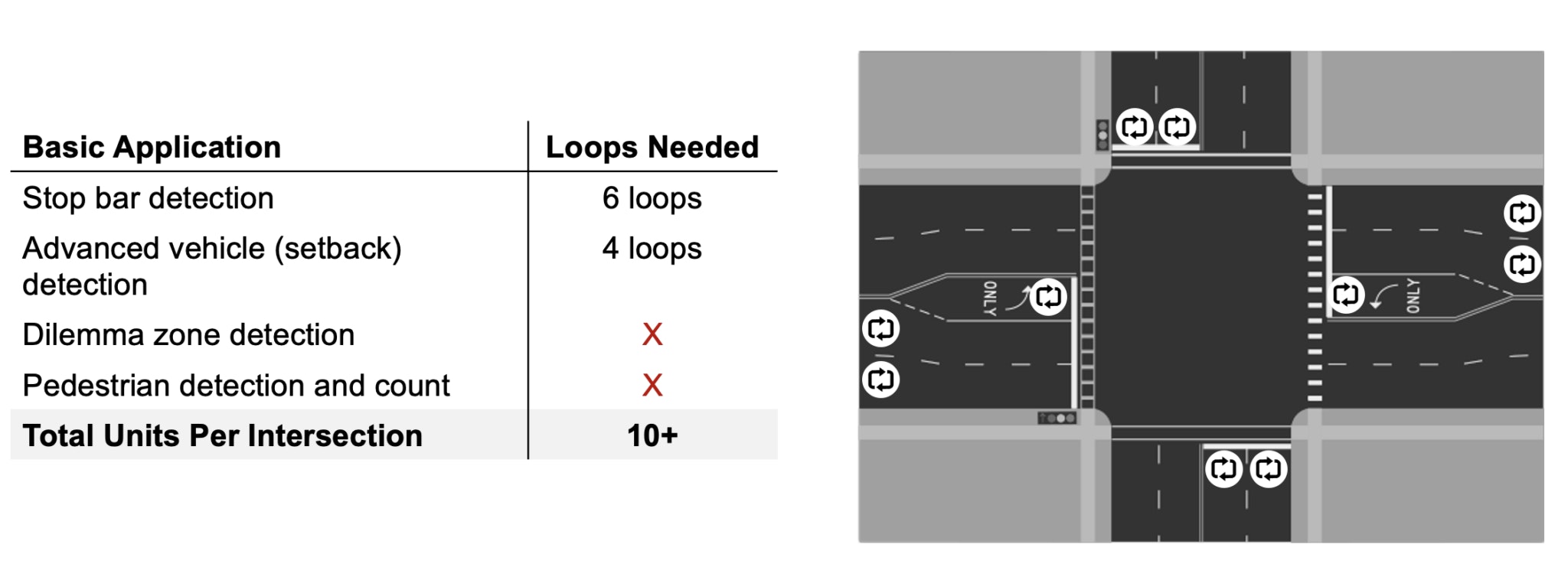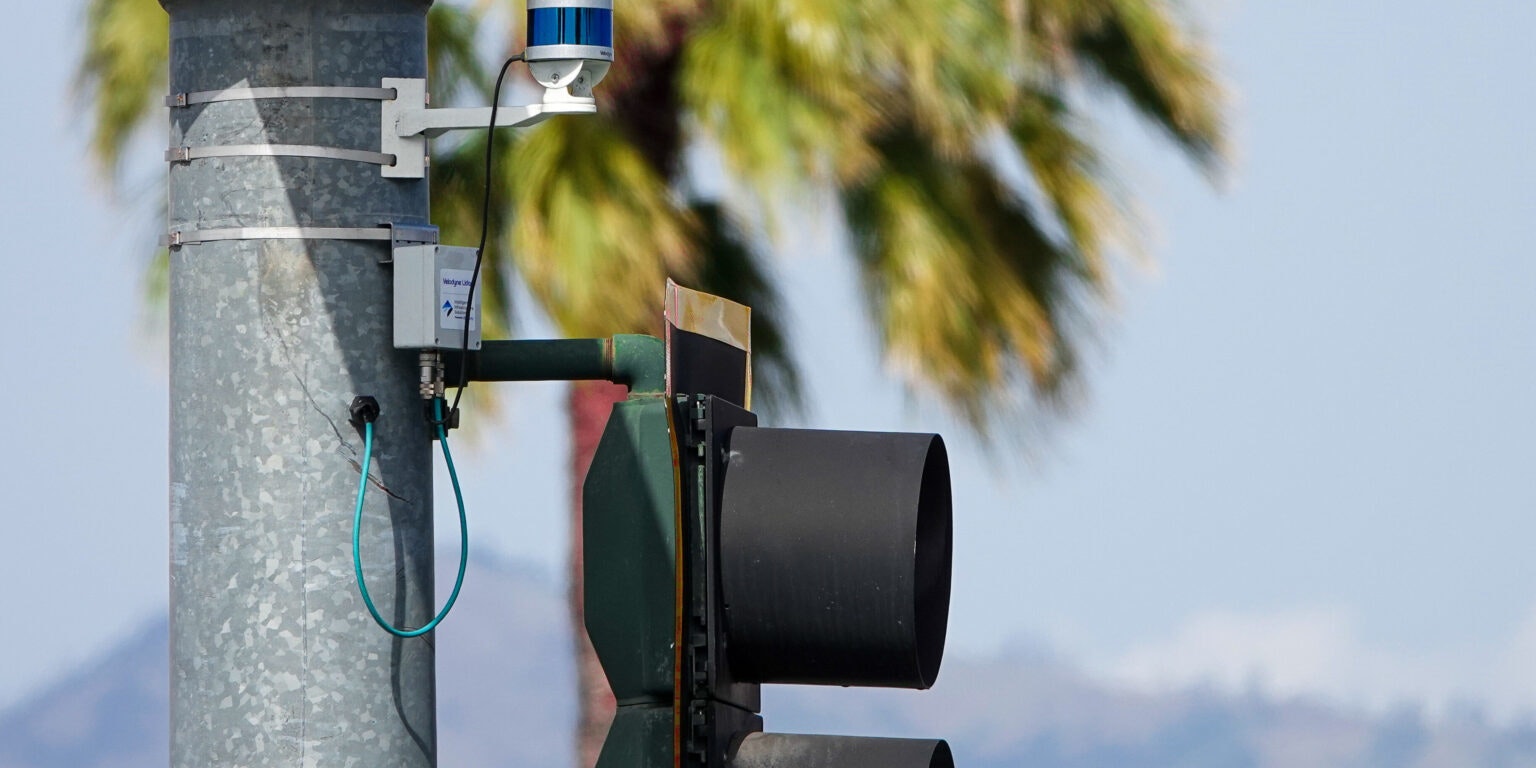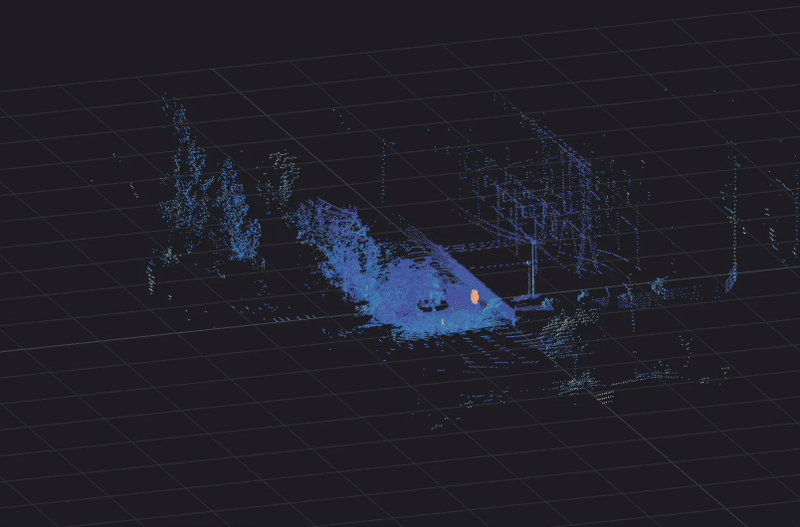Inductive loops are the most common traffic sensors. Used in many cities around the world, they were developed to detect the presence of passing vehicles on the road and at intersections.
Loops are relatively simple in their technology approach. One or more coils of electrical wiring is cut into the pavement where vehicles will need to be detected. The ends of the loops are connected to an amplifier circuit in the traffic controller cabinet. When a vehicle drives over the loop, it disturbs the magnetic field of the loop and reduces its inductance. The inductance drop is sensed by the amplifier circuit which triggers signals to the traffic controller.

Although they help urban planners and traffic operators know when and how many cars are at an intersection, they have several significant disadvantages:
- Inability to distinguish between types of road users
- Costly and disruptive to install and maintain
- Do not provide any additional traffic information
- Have a lifespan of only 3 to 7 years

The new generation of traffic sensing
To address these shortcomings, new solutions for collecting traffic data have emerged, such as radar, video cameras and lidar sensors. In this blog, we will focus on the comparison between inductive loops and Ouster’s lidar solution, BlueCity.
BlueCity, which combines 3D lidar sensing with AI software, is an ideal, cost-effective solution for urban planners and engineering firms who want to better understand and improve smart city mobility. Cities can get the best planning results by capturing multimodal traffic data in real-time thanks to lidar sensors and AI-based analytics. This powerful and cost-effective solution allows you to collect traffic data, including identifying different types of road users, 24/7 regardless of lighting or weather.
Inductive loop FAQ
Q: Can inductive loops detect cyclists and pedestrians?
A: No. Inductive loops were developed to detect the metal in cars or trucks or other vehicles. They cannot detect road users, such as pedestrians. Motorcyclists and cyclists can be difficult to detect because pavement deterioration, improper installation and street repair can impair a loop’s integrity and degrade a loop’s performance.
Q: Are inductive loops easy to install and maintain?
A: No. In order to install inductive loops, roads must be dug up, causing road closures. The installation is intrusive, takes time and is expensive.
Q: Are inductive loops accurate?
A: Yes. Inductive loops provide accurate results in ideal conditions. This means that the pavement at the intersection has not deteriorated badly, the installation was done properly and the useful life of the inductive loops has not passed. Other factors that negatively affect accuracy include traffic density, vehicle movement and traffic composition.
Q: Can inductive loops tell which way a car is turning?
A: No. Inductive loops can sense when a car has passed over the detection area. They cannot detect the speed or trajectory of the vehicles, limiting the amount of useful data they can provide to traffic and city planners.
Q: Can inductive loops tell which intersections are dangerous?
A: No. Inductive loops can only provide information about the number of vehicles that have passed over the detection area. This type of information cannot indicate whether an intersection is dangerous, only whether it is busy.
Pros and cons of inductive loops
Pros: Inductive loops have been a popular choice for about 60 years and have been adopted in many countries. They accurately provide information about the number of vehicles that have passed over the loops’ detection area.
Cons: Inductive loops cannot provide information about the type of road user, speed, trajectories and other detailed traffic information that is vital for improving road safety. They are also expensive to install and maintain.
The best alternative: Lidar + AI
BlueCity is a unique, cost-effective solution that allows planners to capture multimodal traffic data in real time, 24/7. BlueCity’s lidar sensors are easy to install and maintain and most intersections require only one sensor. BlueCity leverages artificial intelligence to power advanced safety analytics that help identify dangerous intersections and improve road safety. Right out of the box, customers can immediately leverage BlueCity to improve the safety and efficiency of their roadways.

For more information about BlueCity, reach out to us or check out our on-demand webinar for virtual demonstrations showing how cities around the world have used BlueCity to replace inductive loops.




